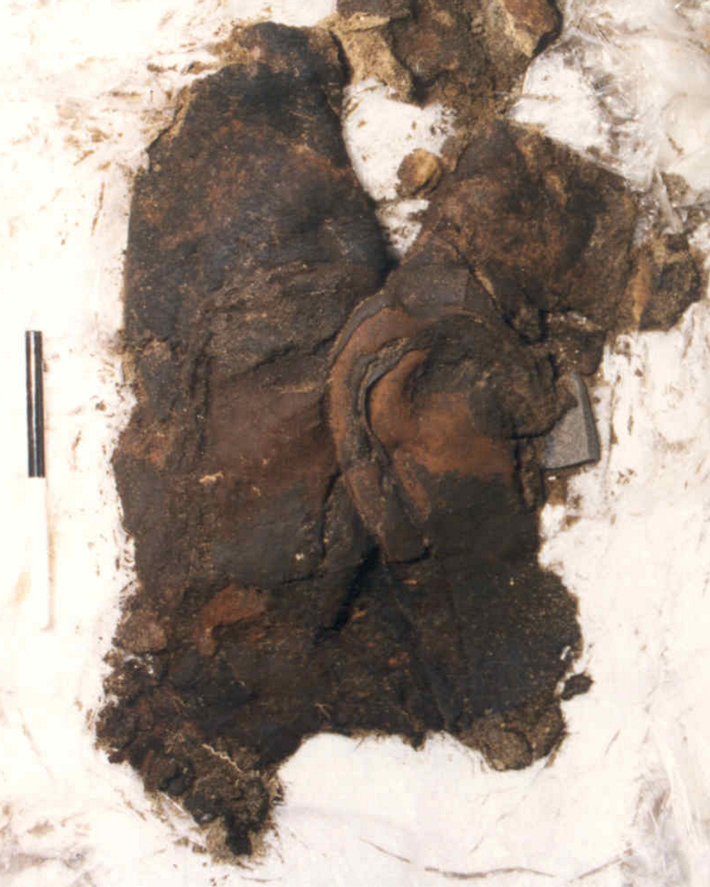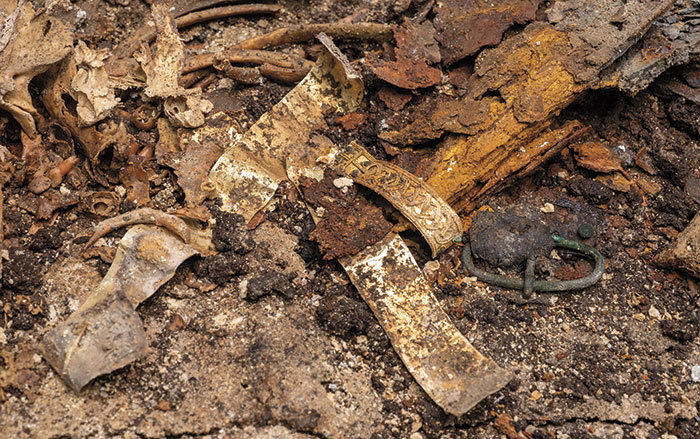
PORTMAHOMACK, SCOTLAND—The Scotsman reports that a 600-year-old pair of leather ankle boots with a copper alloy buckle and thick leg hose made of felted wool have been recovered from a grave under Tarbat Old Parish Church in the Scottish Highlands. “The man had been put in a coffin wearing these clothes,” said Cecily Spall of Fieldwork Archaeology Services, “but the coffin at some point collapsed and everything concertinaed. There was something about that collapse that meant that oxygen was excluded, which allowed for this incredible piece of conservation.” Signs of wear and tear, and leg hairs in the hose, indicate that the man wore these items during his lifetime. Spall said he may have been an important person in the community, since most people are thought to have been buried without clothing or in a shroud during the medieval period. Radiocarbon testing and chemical analysis of the man’s bones could offer more information about when he lived, where he was born, and his diet. To read about another pair of well-preserved boots that were recently found in a medieval burial in London, go to "Die With Your Boots On."










